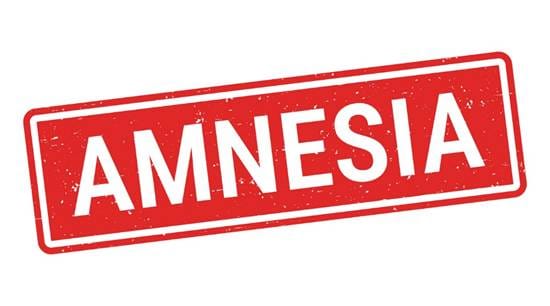STRATEGIC PLANS: WHY THEY FAIL
Why Most Utility Strategic Plans Fail (And What Actually Works)
I surveyed municipal utility leaders attending my strategic planning seminar, and the results were interesting: 75% of participants had completed strategic plans, only 60% found the development process effective, and just 50% saw effective implementation.
That means 1 in 2 utilities have plans that aren’t working. If you’re in that 50%, here’s why—and what works instead.
The 3 Fatal Flaws That Kill Strategic Plans
1. The “Flying Blind” Problem

The Problem: Either avoiding strategic planning altogether or creating plans in isolation without organizational buy-in.
I see two versions of this flaw. Most commonly, utilities simply aren’t developing plans at all. Maybe they don’t have the bandwidth to undertake strategic planning, or they had a bad experience with it in the past. So, they keep moving along, reacting to problems and addressing what seems urgent without stopping to ask: What’s most important for the organization now?
The second version happens when the utility director or a small department develops a plan in isolation. They create what seems like a solid strategy—and it might be—but the utility governing board wasn’t meaningfully involved in the process and senior management didn’t help shape the priorities. When it comes time to implement, there’s no organizational buy-in because key stakeholders had no role in create it.
Quick Fix: Strategic planning isn’t a solo project. The people who need to approve budgets, allocate resources, and champion initiatives must be part of the planning process.
2. The “Boil the Ocean” Problem

The Problem: Trying to fix everything at once with 15+ strategic initiatives.
I’ve heard of strategic plans that include new billing systems, grid modernization, workforce development, customer portals, renewable integration, cybersecurity upgrades, rate restructuring, economic development partnerships, and other “critical priorities.”
When everything is urgent, nothing gets the focused attention it needs. Your team becomes scattered, budgets get spread thin, and progress stalls across all fronts.
Fix: If everything is a priority, nothing is a priority. The most successful utilities I work with focus on 4-6 goals that will make the biggest difference with 3-5 strategies to achieve each goal. This balances clarity with comprehensiveness.
3. The Implementation Amnesia

The Problem: No clear owner, timeline, or accountability measures.
The plan gets approved with great fanfare, then disappears into the daily grind of operations. “Strategic initiatives” get buried under urgent emails. They get secondary status to ongoing activities. And no one asks how implementation is going? Six months later, someone says, “Whatever happened to that strategic plan?”
I’ve seen beautiful plans that fail to take the next step of thinking through implementation. They don’t develop action plan for each strategy. They don’t create implementation timelines and milestones. They don’t assign responsibility or develop budget implications.
Fix: Create an implementation plan. Assign a specific person to own each goal, set milestones, and review progress regularly. Create a schedule for people to periodically report on progress to the governing board.
What Actually Works: The 3 Essential Outcomes Framework
Based on what I’ve seen work, here’s a framework that utilities can use to get real results and achieve three critical leadership outcomes:
1. Define a Compelling Purpose for Your Organization
Beyond “keeping the lights on”—what unique value does your utility bring to your community? Is it exceptional reliability and outstanding storm response? Leading the region in renewable energy? Providing the most competitive rates for economic development?
Your purpose should energize employees and justify community investment. When team members understand why their work matters beyond just maintaining infrastructure, they bring different energy to their roles.
The test: Does the CEO talk frequently about why your utility exists and what makes it special? Does the CEO say it so often that employees know it and can repeat it?
2. Identify the Most Important Strategies for Success
This isn’t about listing everything you could do—it’s about identifying the 4-5 goals that will make the biggest difference for your utility. These should build on your existing strengths and opportunities while addressing your most critical weaknesses and threats.
Maybe it’s modernizing your customer experience to match what people expect from other service providers. Perhaps it’s preparing your workforce for a wave of retirements coming in the next five years. Or it could be positioning your utility to take advantage of new funding opportunities for infrastructure improvements.
The test: Can your leadership team explain your top priorities without looking at notes?
3. Align Your Team’s Efforts and Unleash Their Talents
This is where most strategic plans fall apart. You can have a brilliant strategy, but if your team doesn’t understand how their daily work connects to the bigger picture, you’ll never achieve meaningful results.
Alignment means every department is working toward the same goals. It means people understand how their individual contributions matter. It means team energy is focused on what matters most, not scattered across dozens of competing initiatives.
The test: Do your employees see clear connections between their daily work and your strategic priorities? Are goals and strategies assigned to them and is progress evaluated in performance evaluations?
The Reality Check
Most strategic plans fail because there is no collaboration on the plan’s development and there’s no recognition the end of the plan’s development phase is the beginning of the implementation phase.
Your utility can’t afford another shelf-sitting plan. In an industry facing overwhelming challenges, you need strategic clarity more than ever.
The good news? When utilities get these three outcomes right, the results are noticeable. Teams become more engaged. You can feel the organization-wide focus on impactful initiatives. Progress accelerates. Board and community confidence grows.
Quick Self-Assessment: Is Your Plan Headed for Trouble?
□ Was it created mostly by a small group of people without input from others?
□ Does it have more than 6 major initiatives?
□ Has it been more than 3 months since anyone discussed progress?
□ Do most employees not know what’s in it?
If you checked 2+ boxes, it’s time for a new approach.
Ready to create a strategic plan that actually gets implemented? The utilities that thrive in the coming decade will be the ones who have a plan and act on it—they’ll be the ones with the clearest purpose, sharpest focus, and best team alignment.
This is the number one job of leadership and the essential outcomes of effective strategic planning. Let’s talk about how you can get started.
Mark McCain is Executive Consultant/Strategic Planning for Hometown Connections, Inc. He provides strategic planning services to public power utilities and joint action agencies nationwide. Mark can be reached at mmccain@hometownconnections.com.

